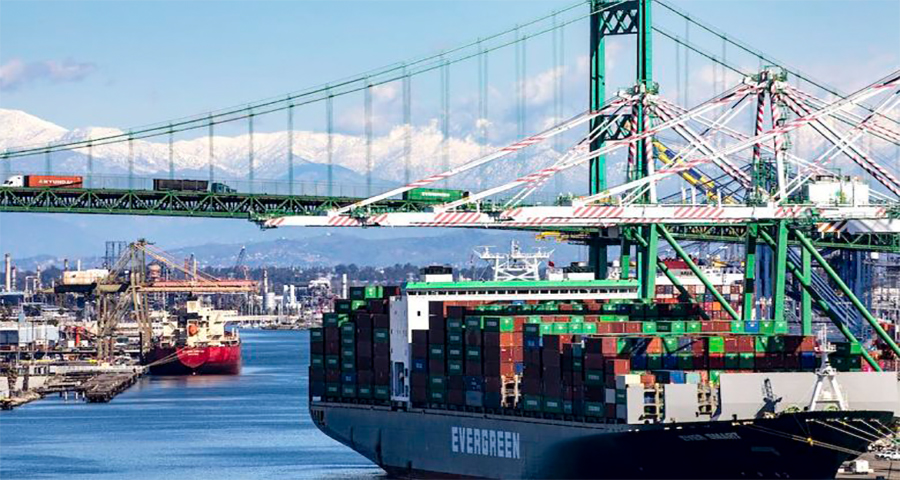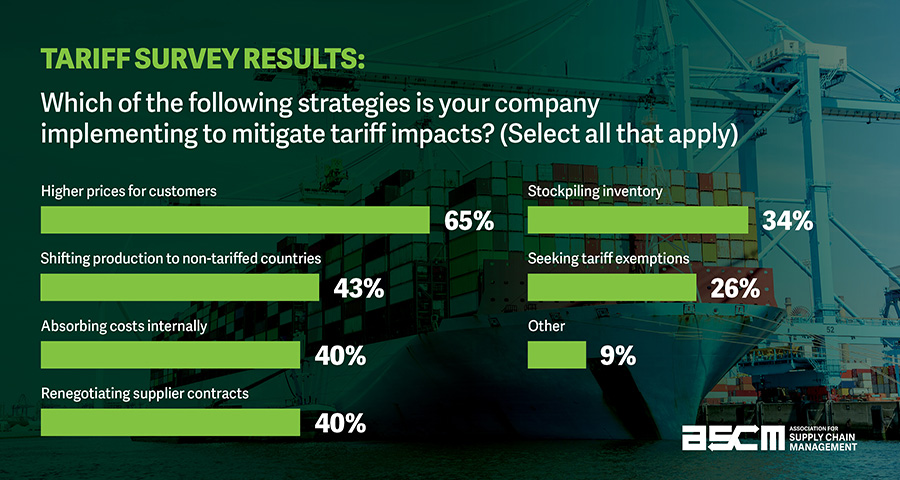Supply Chains Upended by Historic Tariffs
KEY POINTS
- U.S. imposes historic tariffs on over 100 countries.
- Most manufacturers surveyed by ASCM plan to pass tariff costs to their customers.
- Health systems use SRS to calculate tariff exposure for the items they buy.

The Trump administration imposes historic tariffs on over 100 countries.
Healthcare sourcing is being buffeted by rapid changes in U.S. tariff policy and foreign country retaliations impacting supply chains worldwide. Following weeks of tariff volatility, the U.S. increased tariffs to historic levels on more than 100 countries including the top U.S. trading partners. Senior administration officials issued a warning to countries that have threatened to impose retaliatory tariffs against the United States. Nevertheless, widespread retaliatory tariffs are expected, raising the possibility of a self-reinforcing cycle of increases in tariff and non-tariff regulatory measures.
President Trump on April 2 unveiled the centerpiece of his weekslong tariff agenda, saying he will impose a 10%, across-the-board tariff on imports from all but a few countries (countries exempted from tariffs) and an additional “reciprocal tariff” on some nations (reciprocal tariff list by country). The 10 percent “baseline” tariffs will take effect on April 5 and the higher rates (AKA reciprocal tariffs) will kick in on April 9. China’s tariffs are 54% (20% baseline and 34% reciprocal tariff). Canada and Mexico are exempted from new tariffs but the tariff rates imposed in March will continue. These March tariffs on Canada and Mexico exempt goods under the USMCA pact including medical devices and pharmaceuticals. Other products are tariffed at 25% except for energy at 10%. President Trump framed his tariff policies as a response to a national emergency, saying that tariffs were needed to boost domestic production.
The new tariffs do not apply to products that the Trump administration already hit with separate tariffs, including steel and aluminum and vehicles and their parts. The reciprocal tariffs also do not apply to copper, pharmaceuticals, semiconductors, lumber, gold, energy and “certain minerals that are not available in the United States,” according to a White House fact sheet. Automobile will be tariffed at 25% starting April 3, with 150 auto parts categories, computers, and laptops to be tariffed 25% starting May 3.
A recent ASCM survey of 400 supply chain professionals reveals that 65% of manufacturing organizations intend to pass increased costs on to customers. Of those, 41% expect moderate price hikes, 20% foresee significant increases, and 3% predict extreme markups.

To adapt, many manufacturers are adjusting their strategies. The survey noted 43% shifting production to non-tariffed countries, 40% attempting to absorb the costs or renegotiate supplier contracts, and 34% stockpiling inventory in anticipation of further disruption.
Healthcare executives face challenges estimating their exposure to increased costs from tariffs for their health system. Any health system tailor SRS to their suppliers and items in order to assess exposure to tariffs and other risks, gain supply chain transparency, and move from reactive to proactive risk mitigation. Contact SRS Support (support@supplyrisk.com).
The following SRS reports can be tailored to the items you buy to assess tariff exposure for your health system:
- “Products Tariffs – Special Report” – details suppliers sourcing from tariffed countries (in the Prevent dashboard).
- “Products by Country (Tariff Risk)” – choose any country to see which items you buy are manufactured there (in the Prevent dashboard).
- “Products Subject to Section 301 China Tariffs” – downloads current section 301 tariffs on healthcare item made in China (in the Prevent dashboard).
- “Products Sites and Risks” – lists manufacturing location for all items you buy from the supplier (in the Prevent dashboard after you drill down on a supplier).
- “Supplier Geopolitical Summary” – summarizes exposure for all countries (in the Respond dashboard).
For more information, see:
Reuters, Trump announces 10% tariff on all imports, with higher rates for some countries, April 2
X, The White House, Liberation Day Reciprical Tariffs, April 2, 2025
The Wall Street Journal, Trump Will Deal With Mexico, Canada Tariffs Separately, April 2
The Economic Times, India to Face “Discounted” 26% Tariff from US, April 3
Association of Supply Chain Management, Relentless Tariffs and a Supply Chain Crossroads, March 28
Manufacturing.Net, Survey Uncovers Tariff Impact on Manufacturers and Their Adjustment Strategies, March 12
Supply Risk Solutions, Impact of Upcoming Tariffs on Healthcare Sourcing, March 11
Supply Risk Solutions, Trump’s Partial Tariff Exemptions Leave Majority of Canada-Mexico Duties in Place, March 7
Supply Risk Solutions, U.S. Tariffs on Canada and Mexico Take Effect, March 4
Supply Risk Solutions, U.S. Unveils New Tariff Plans, February 28
Supply Risk Solutions, Trump Confirms Canada and Mexico Tariffs Will Take Effect on March 4, February 25
Supply Risk Solutions, Trump Proposes 25% Tariffs on Cars, Chips, Pharma Products, February 20
Supply Risk Solutions, China Counters U.S. Tariffs with Targeted Tariffs, Export Controls, and Investigations, February 4
Supply Risk Solutions, Trump Delays Tariffs on Mexico and Canada, February 3
Supply Risk Solutions, U.S. to Impose Tariffs on Key Trading Partners Feb. 1, February 1
Supply Risk Solutions, Trump’s Tariff Policies Spark Global Uncertainty, January 27
Supply Risk Solutions, Trump Proposes 25% Tariffs on Canada and Mexico Starting February 1, January 21
Supply Risk Solutions, Tariff Planning Requires Product Transparency, January 13
Supply Risk Solutions, U.S. Tariff Plans Bring Urgency to Knowing Product Manufacturing Locations, December 2
Supply Risk Solutions, Tariffs Push Manufacturers to Rethink Supply Chain Strategies, November 15
Supply Risk Solutions, Tariffs Spur Urgency to Understand Product Manufacturing Locations, November 11
Supply Risk Solutions, List the Products You Buy That Are Subject to China Import Tariffs, October 28
White & Case, United States Finalizes Section 301 Tariff Increases on Imports from China, September 17